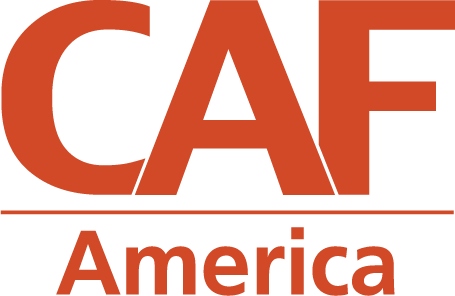In recent years, particularly following the Covid-19 pandemic and global social justice movements, philanthropists and stakeholders have embraced an emerging approach, known as place-based grantmaking, that works to improve a community as a whole by tailoring philanthropy to the needs of the people within it.
Place-based grantmaking invests in solutions and changemakers within a community, and through collaboration between that community and committed grantor donors can create longer lasting, more positive impact while also bolstering the reputation and capacity of locally-led charity partners.
Recently, I saw a great example of place-based grantmaking during Covid-19, when many organizations mobilized to support undocumented people in the United States. In this case, many donors were focused on supporting small grassroots organizations, often led by people of color, with deep community connections that could help undocumented families far faster through their personal networks than an NGO without established community ties. These ‘community-owned’ organizations helped individuals obtain vaccines and access state benefits safely without risk of deportation, building on previous collaborations for census work. Providing funding directly to these small organizations made grants more efficient and empowered them to design their own destiny.
How Does Place-Based Grantmaking Work?
There are several key principles that support a holistic place-based approach to grantmaking.
- Place Over Projects: This principle underscores how the commitment to specific communities takes precedence over preconceived projects. This approach contrasts with non-local funders who often bring top-down strategies to decentralized communities.
- Local Connectedness: This principle recognizes the crucial role of building relationships and trust for effective social change. Embedded funders, with personal connections to the communities they aim to benefit, are seen as having a distinct advantage in accessing local relationships and maintaining trusted status.
- Flexibility and Adaptiveness: This key theme is vital, particularly for embedded funders who adjust initiatives based on changing local sentiments. Funder immersion, especially for embedded foundations, is highlighted as offering practical benefits due to their in-depth knowledge, insider status, and local trust, enabling them to start place-based work from a more advanced position. Additionally, non-local foundations can expedite early-stage development by leveraging the knowledge and connections of local foundations, playing supportive roles alongside embedded efforts and allowing both embedded foundations and the local community to lead.
Challenges and Critiques
As an emerging approach in philanthropy, place-based grantmaking faces some challenges and has received a few critiques from the philanthropic sector.
Primarily, grantmakers supporting locally-led solutions have much more power and influence on those communities when they begin to fund place-based programs. Funders must be sensitive to the impact their presence can have on their grantees and the people they serve – it is easy to push their own priorities when they are providing all the funding.
Many funders also discount the expertise of local organizations, or make assumptions about how local organizations should or ought to function. This is a significant issue when working with international grantees, as they will not always have the same employment or governance structures as US 501(c)(3) organizations. Many times this can lead to funders dismissing or discounting the value local partners bring to the table.
Image: Community members building a house as a team in Soweto, South Africa
Furthermore, grassroots foundations can also face resource constraints, and therefore prioritize flexibility of funds over tried and true research models that grantors may feel more comfortable with. Larger, non-local NGOs also usually engage temporarily with communities for place-based grantmaking and struggle to fund projects on realistic timelines. Organizations like these with traditional grantmaking cycles may find it challenging to adapt quickly to community changes. CAF America advocates whenever possible for donors to build flexibility into their funding strategies, and provide unrestricted grants whenever possible.
Best Practices for Place-Based Grantmaking
CAF America endorses three best practices for strong place-based grantmaking programs that are mutually beneficial to communities and funders.
- Engage the community: The most successful place-based grantmaking programs engage the community and its stakeholders to understand what they need and try to involve them in the decision making process. Communities are not static or uniform, and cannot each be approached in the same way. Engaging the community helps philanthropists avoid a one-size-fits-all approach that will likely lead to ineffectual grantmaking. In these conversations, it is important to consider a community’s history, taking particular care to understand inequities that may affect their ability to change and thrive. Understanding these diverse perspectives will ultimately lead to more substantial impact.
- Look for diverse partners: Oftentimes, organizations already exist that are engaging in the work a community needs. These organizations are critical partners; they have a deep understanding of the dynamics in a community and already have infrastructure in place to help achieve the desired impact. Philanthropists should look for these organizations and consider if they lack the resources, accessibility, or visibility needed to make a scalable impact. Helping these smaller partners scale their operations is key to deepening impact and includes the added benefit of providing further investment into the community itself.
- Embrace the learning process: Place-based philanthropy is best accomplished when philanthropists are engaged for the long term. Do not expect to get it right the first time—each iteration of grantmaking will allow partners to test different programs, gauge success, and ultimately scale up the most successful programs. Even if the first iteration of grantmaking is hugely successful, place-based grantmaking is intended to be the foundation for a long-term partnership. Successful programs adapt to the changing needs of a community and constantly look for ways to build on previous successes.
By engaging stakeholders, looking for diverse partners, and embracing the learning process, philanthropists can foster successful place-based grantmaking programs that not only positively impact communities, but bolster their own reputations as trustworthy, committed partners for change. Communities want more than financial investment; they want philanthropists that engage with them as partners in a shared journey to improve their lives as a whole. Utilizing these best practices in place-based grantmaking will help foster this partnership and build a philanthropist’s reputation as a good partner to do good work.
Find community-led organizations in our global charity database here.


